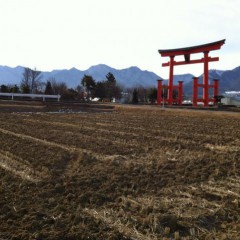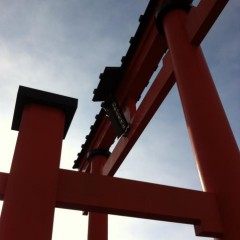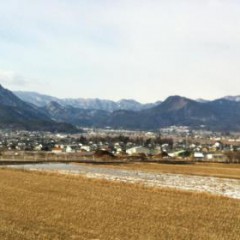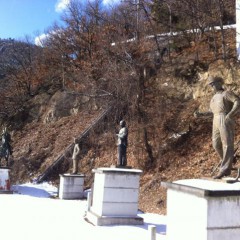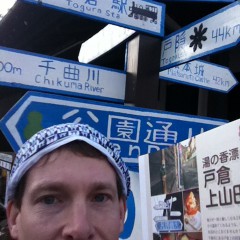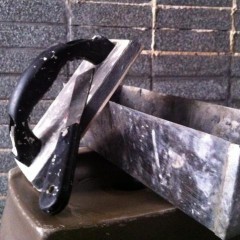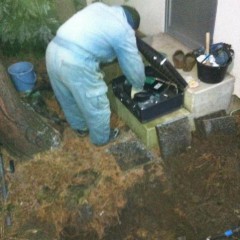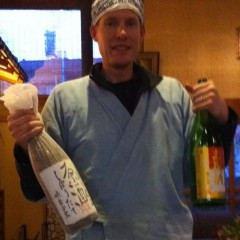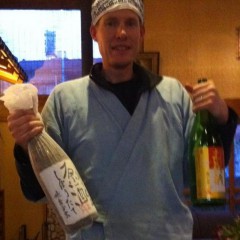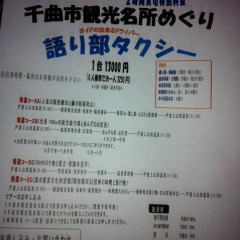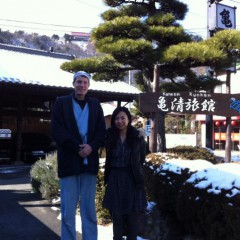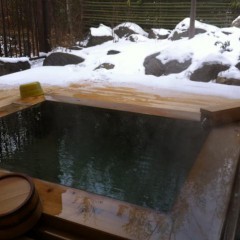長野県は本当に山の国です。人が住める平らな場所がかなり限られている。千曲川や犀川、木曽川などで作られた谷ぐらいしかない。東信の上田市の中心はそうやって千曲川の周辺ですが、その西側に珍しく平らな場所がある:塩田平。
塩田平が住宅や畑、大学、シッピングモールなどがあって、つまり、現代的な街に見える。しかし、その表面の下は長い歴史がある。
塩田平の西側に1000年以上前からあった別所温泉がある。鎌倉時代に信州の首都だった。「信州の鎌倉」と呼ばれて、そのころから国宝八角三重塔を有する安楽寺や、善光寺に向かっている北向観音等のお寺さんが特殊。
北側は戦国時代の上田が原合戦を記念する上田古戦場公園がある。
南側に806年から歴史が続いてきた生島足島神社がある。位置的に日本のおへそだと言われて、日本全体を守る神の神社である。
この寒い冬の日に塩田平を訪ねました。ある細い道をはしていたら、高さ13メーターの鳥居を見かけました。色で分かったけど、生島足島神社の鳥居です。塩田平と周辺の山々の背景とこの巨大の鳥居の写真をお送りします。塩田平のシンボルだと思った。
Nagano's geography is dominated by mountains -- lots of them. There's hardly any flat places where people can build proper place to live. The towns are mostly gathered along the few river valleys, like those of the Chikuma, Sai and Kiso rivers.
To the west of the city of Ueda, however, is a relatively wide, flat spot away from the city's center that's down by the banks of the Chikuma River. This area is called the Shioda Plain. It is filled with houses, rice fields, orchards, a couple of universities, a shopping mall.
All in all a very modern facade. If you dig a bit deeper though, you'll realize the Shioda Plain has a very, very deep history.
On the western edge is an onsen, Bessho, that's been around for over 1000 years. Back in the Kamakura era, it hosted the prefecture's capital. Several major temples were built at that time, including Anraku-ji which features a 3-story pagoda that is on the national historical registry, and Kitamuki ('north-facing') Kannon which is lined up with the south-facing Zenkoji Temple in Nagano City. These temples have earned Bessho the nickname 'Little Kamakura'.
On the north side of the Shioda Plain is a marker designating the location of the Uedagahara Gassen, one of the major regional battles during the Warring States era.
And on the south side is Ikushima Tarushima Shrine, which dates back to the year 806. The distinctly vermillion-colored shrine claims to be at the geographic center of Japan and houses the kami ('god') that protects the entire country.
I recently made another trip to the area, and came across a 13-meter tall torii gate. Judging by its color, I knew it was related to the Ikushima Tarushima Shrine. The gigantic gate with the plain spreading out in the distance surrounded by all of those mountains really seemed to symbolize the Shioda Plain.
以前の生島足島神社の記事 Earlier entry on Ikushima Tarushima Shrine
